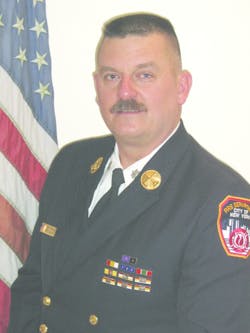The Fire Scene: Pre-Connected Hoselines
One of the most common and frequently used pieces of equipment in the American fire service is the pre-connected hoseline. I want to talk specifically about pre-connected hoselines because they are by far the most common type of attack lines used everywhere.
There are several rules that are vital when it comes to pre-connected hoselines. Let’s take a look at these rules and how they apply to you.
A scary thought
I am always amazed when I am giving a presentation to a group of firefighters and I ask how long or how many lengths their pre-connects are. I’m amazed because half the people in the room don’t know! That amazes and scares me. If you are a firefighter and you are responding to a fire call on an engine, you’d better know how many pre-connected lines are on the apparatus and how long each one is. It is impossible to safely and effectively fight a fire if you pull a hoseline and don’t even know how many lengths of hose it contains.
If all of the pre-connects are the same length, you still need to know how long that is. This information will tell you whether the line will be able to reach the objective. This information will let you know if you can reach the fire floor, the floor above or the top floor. You must know the lengths of your pre-connects and you must also know what that those numbers mean in relation to the distances on the fireground that you will be stretching them over.
Every engine should have three pre-connects available for stretching at a structural fire. It’s hard to believe that some of us spend hundreds of thousands of dollars, often around a half-million dollars, for an engine that has only two pre-connected hoselines. That giant diesel engine, a 10-person cab and crew compartment, 1,000 gallons of water, 2,000 feet of supply hose and enough fittings and nozzles to extinguish the towering inferno and only two ready-to-use attack hoselines.
Three pre-connects makes give the first-arriving engine the ability to supply the initial attack line to the fire, a backup of second line for the fire floor or above and a third line to protect or enter a threatened exposure. Most of us lay in a supply line with the first engine or have one laid in by a later-arriving engine. There is no need to engage a second engine for the third line. I wouldn’t go beyond three, but only two pre-connects is a very limiting aspect for an effective engine company operation.
Are pre-connected hoselines limited to being 1¾ inches? The answer is no. Having a 2½-inch pre-connected hoseline is a great, big water hoseline for fully involved buildings and heavily involved commercial buildings, exposure protection and other situations that require large gallons per minute or a long reach. Again, if every engine firefighter knows how long both the 1¾-inch and the 2½-inch pre-connects are, they can make rapid fireground decisions about which line to use and where.
Another important task that is often overlooked concerning the pre-connected hoseline is the “short stretch.” Even if you know the lengths of the hoselines, a short stretch can happen as a result of a miscalculation of the distance, an oddly arranged occupancy or any number of other issues.
What do you do when you discover that the attack hoseline will not reach the fire? You’d better have a plan. Trying to figure out what to do at that point is not a good idea. Let me tell you what you should NOT do, and I mean NEVER: Do not pull a length off of the other pre-connected line that has not yet been pulled. If you are handling a short stretch, you have already compromised this fire attack. There is a great probability that that second pre-connect is going to be needed somewhere to help control this fire.
If you cannibalize the second pre-connect to increase the length of the first pre-connect, that is the only line you will have. What you do need to do is have several lengths of each size hose double rolled with the coupling on top. This allows the engine pump operator to quickly remove the length from the compartment and insert it into the line that needs additional length, without negatively impacting the serviceability of the second pre-connect.
Consider these “rules” and see how they can make your engine company pre-connect operations safer, faster and more effective at your next structural fire.
Chief Salka takes a candid look at news and events impacting the fire service in his blog “The Fire Scene” at http://www.firehouse.com/blogs/the-fire-scene.
About the Author
John J. Salka Jr.
Battalion Chief
JOHN J. SALKA JR., who is a Firehouse contributing editor, retired as a battalion chief with FDNY, serving as commander of the 18th battalion in the Bronx. Salka has instructed at several FDNY training programs, including the department’s Probationary Firefighters School, Captains Management Program and Battalion Chiefs Command Course. He conducts training programs at national and local conferences and has been recognized for his firefighter survival course, “Get Out Alive.” Salka co-authored the FDNY Engine Company Operations manual and wrote the book "First In, Last Out–Leadership Lessons From the New York Fire Department." He also operates Fire Command Training, which is a New York-based fire service training and consulting firm.

